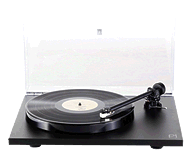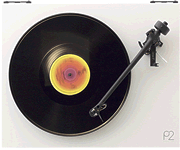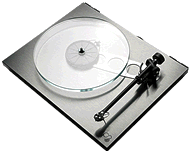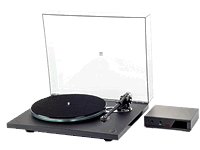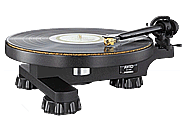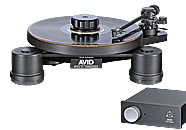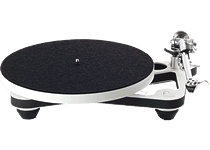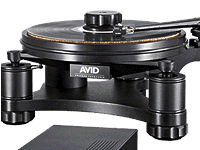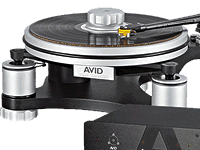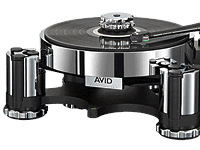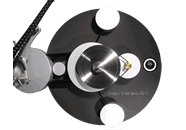Turntables@kemela
Many enjoy the collectability of vinyl records and may already have, or plan on acquiring, a sizable vinyl record collection. Today's vinyl records are better pressed with purer vinyl so they have fewer pops and crackles. A better record player will preserve the sound quality of your vinyl record collection investment. Because the familiar 12 inch vinyl record remains unchanged, consider buying a new record player as a long term purchase that you will enjoy for many years. Unless you are an occasional listener, get the best one you can afford!
Today's Record Players
More keep appearing as manufacturers don't want to be left out of the vinyl revival party but manufacturers with a particular emphasis on analog are the safest bets and these companies are usually the ones that make all the components that go into a 'record player' - turntable, tonearm and cartridge - themselves. Belt drive remains the most widely adopted method of driving a platter from a motor as the more common DJ direct drive turntables are vunerable to motor noise being transferred into the platter and it's harder to get micron accuracy in a bearing where the spindle has to be part of a motor. Modern manufacturing has vastly improved the performance of turntables, tonearms and cartridges and record players are available from a few hundred dollars to many thousands of dollars.
Beyond spinning records
In the very best state-of-the-art products, modern manufacturing methods such as 3D printing and Selective Laser Melting (SLM), better space age materials, Computer Aided Manufacturing and Design has enabled the full potential of vinyl to be achieved and over time these advances will trickle down into more affordable products. This potential can only be realized however if a full understanding of the science and art of vibration mechanics has been explored in a well engineered design that goes beyond a trendy decorative sculptural objet d'art. Record players vary in the amount of maintenance and tweaking required so after deciding a ball park budget, does the hobbyist in you relish the prospect of configuring, tweaking, and upgrading what is a precision instrument or are you looking for a no-fuss plug-and-play kind of record player?
Maintenance
The stylus and cantilever suspension will wear over time and will need to be replaced periodically to preserve sound quality. Buying a record player online may not be the best option for you if you are not comfortable replacing a cartridge yourself. Belts should also be replaced periodically. Turntables are not easy to move from place to place so don't forget to keep the box!
The three elements: turntable, tonearm and cartridge
Like a HiFi system, you'll get the best sound quality for your money if these three elements are balanced. But if you are planning to evolve a system over time, it is probably better to focus on the table first as it is the foundation of the sound housing the main bearing supporting the platter and the motor. The record needs to rotate at a constant speed without cogging or wobbling, while the table manages unwanted vibrations. Turntables don't have to be large and massive to perform well. Rigidity and the frequency specific transmission of induced vibrations will determine the sensitivity and coloration of a turntable. Where you place a record player and the surface it sits on also influences the sound.
Tonearms and cartridges
The tonearm is a separate element from the table. It also needs to be very rigid, stable, with free horizontal and vertical movement but no other degrees of freedom. How the cartridge mounts to the tonearm and the quality of the internal wiring and external cables are also highly influential. An inexpensive cartridge can sound better than you might expect fitted to an expensive turntable/tonearm, similarly you may not get such a large boost in performance from fitting an expensive cartridge in a modest record player. Cartridges must be installed correctly and properly aligned for best performance.
